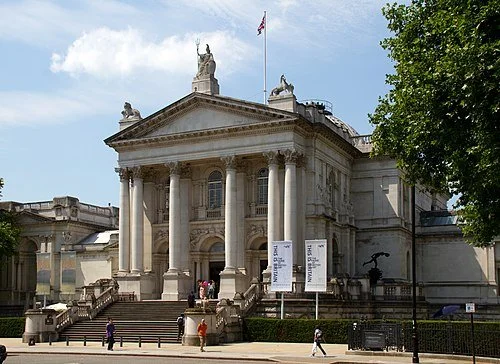Since this course focuses on artworks that were either nominated for or won The Turner Prize, the course website provided an overview of The Turner Prize, as follows:
“The Turner Prize is awarded each year to an artist who has made an outstanding contribution to art in Britain during the previous twelve months. I've chosen to concentrate on the Turner Prize because I believe that many of the art works nominated for it have important things to say about the times in which we are living. The art works that you'll encounter here are visually diverse, ranging from pickled cows to paintings made with elephant dung and glitter. Some are beautiful, some are shocking and many might appear on first sight to be very confusing. I can't predict whether you'll like all (or, indeed any) of them, but I hope that by the end of this free course you'll agree that contemporary art can be extremely thought-provoking. Taking the time to look beyond the immediate appearance of an art work to consider what the artist might be trying to say can be immensely rewarding.
The course describes how The Turner Prize, founded in 1984, has always attracted controversy, as seen by this quote by the Daily Mail:
“The Turner Prize is really the artistic equivalent of the Emperor's new clothes – incomprehensible rubbish worshipped by a narrow and increasingly out-of-touch clique.”
The course asks why the Turner Prize is often so controversial? Why is Turner Prize-related art often less than enthusiastically received?
It also notes how The Turner Prize does have its fans, as art critic Iain Gale asserted that while:
“… art prizes abound – all might learn from the Turner. It is a benchmark. If it didn't exist we would have to invent it. It stimulates debate, it engages and provokes. We need such catalysts. Love it or loathe it, the Turner has gradually put contemporary art within the public domain.”
Ultimately, The Turner Prize has always had the potential to stimulate debate, engage and provoke.
Video > Tate. “30 Years of the Turner Prize.” YouTube, 29 Sep 2014.
Video > Guardian Culture. “How the Turner Prize turns unknown artists into multi-millionaires.” YouTube, 7 Dec 2015.
Video > AP Archive. “Turner Prize nominees stir up controversy.” YouTube, 21 Jul 2015.
The course website also noted how:
“…comments posted to a 2004 comments section on the Turner Prize website focused on:
Complaints that the chosen artists displayed no talent or artistic ability;
Complaints that the chosen art didn’t qualify as art at all; and
Comments that people didn’t understand what the chosen art meant and represented (people also felt they would look foolish if they admitted they didn’t understand an artwork).
“Analysis and interpretation of contemporary art… involves the spectator (the term used in this course to describe a viewer of an art work) performing a step-by-step examination of the work in a very similar way to the examination of any other text (for example, a haiku poem).“
The course site explains how ultimately, one can use…
“…all four points of the Study Diamond to:
find a framework for analysing art texts; and
better understand some of the reactions to art works shortlisted for the Turner Prize.”
Photo > Tate Britain: the venue for the Turner Prize except in 2007, 2011, 2013, 2015 and 2017.
